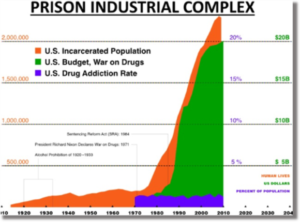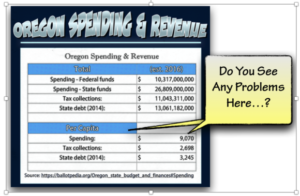Oregon State Legislature sent this bulletin Thursday, January 25, 2018 by devadmin
Here’s a look-see…
PERS unfunded liabilities are looming ever larger, high-school graduation rates, OHA budget over-runs, carbon emission debates, over-spending tendencies, school choice, criminal incarceration rates, marijuana problems and the opioid epidemic.
Additionally, we will be dealing with Clean Air Oregon, Carbon Cap and Trade, a potential constitutional referendum on unanimous juries, electric rate-payer protection, pharmaceutical drug transparency act and a limit on late-term abortions.
Myself and my fellow Legislators have got our work cut-out for us.
Aside from these and other issues, the Senate President added me to two new committees. Additionally, the Governor appointed me to a Special Task Force dealing with the rash of Opioid deaths by overdose.
Opioid overdoses plague rural and urban communities, alike.
Opioids such as morphine and fentanyl are the preferred clinical treatments for moderate to severe pain because of their strong analgesic (pain-relieving) properties. Effective pain management is one of the greatest challenges of modern medicine.
The increases in opioid deaths highlights the need for safer analgesics. Opioids, typically, cause death from respiratory depression induced by an overdose.
It is estimated that more than 100,000 adults suffer from chronic pain in the United States alone, and that this costs up to $635 billion per year in medical treatment and lost workforce productivity. The most commonly used drugs for pain management can have numerous side effects. For example, some cause cardiovascular complications, gastrointestinal bleeding, and renal disease.
Aside from these medicinal side-effects, opioids are extremely addictive. Opioids, both prescription and illicit, are the main driver of drug overdose deaths. Opioids were involved in 42,249 deaths in 2016, and opioid overdose deaths were five times higher in 2016 than 1999.
Oregon’s own statistics mirror the national averages. In Oregon, the opioid overdose death rate in 1999, was 2.1 persons per 100,000, while in 2016 the rate was 11.9 persons per 100,000. However, Oregon is at the high-end of the scale with regard to opioid prescriptions. There are 82.2 – 95 opioid prescriptions for every 100 people in Oregon.
A dedicated coalition is needed among the medical and pharmaceutical industries. Prescribers will need to focus on accurate data collection of distribution systems and product tracking to curb opioid abuse. Over the long-term, researchers are ever-hopeful for scientific breakthroughs in academic and pharmaceutical research for the treatment of chronic pain.
More items for investigation will be Oregon’s mandatory minimums on controlled substances, our prison and incarceration systems, local community-based re-habilitation efforts, staffing and budgetary requirements for state and local law enforcement.
Incarceration rates mandated by Oregon’s sentencing guidelines costs taxpayers hundreds of millions annually.
The biggest single problem with the system, as it is engineered today, is that it costs too much and is largely ineffective because the incarcerated individuals are rarely rehabilitated.
Here is a graphic summarizing what we see for all 50 states. (I will try to acquire Oregon specific data for next time.)

As shown in the chart above, drug addiction rates in the US (purple area/scale) are essentially unchanged from the time the War on Drugs was launched by Richard Nixon in 1972. Back then it was somewhere between 1-2% of the adult population. Today, it remains nearly the same, after 50 years of following the same formula.
Meanwhile the budgetary requirements for the nationwide system, including public safety, corrections, parole and probation has soared from a reasonable amount (green area/scale) to $20 billion in 2010 and $32 billion in the most recent year (FY 2017).
At the same time, the US prison population has exploded from 400,000 to more than 2.3 million (orange area/scale).
The current system knows no boundaries and is the perfect tax and spend machine. The licit and illicit drug industries continue to harness the power of the market by supplying drugs that are no longer scarce but remain extremely valuable and extremely dangerous.
The results are broken homes, damaged lives, homelessness and a rash of opioid over-dose deaths.
So, we clearly have our work cut-out for us.
“No government at any level, or at any price, can afford, on the crime side, the police necessary to assure our safety unless the overwhelming majority of us are guided by an inner, personal code of morality. And you will not get that inner, personal code of morality unless children are brought up in a family – a family that gives them the affection they seek, that makes them feel they belong, that guides them to the future, and that will build continuity in future generations. . . . the greatest inequality today is not inequality of wealth or income. It is the inequality between the child brought up in a loving, supportive family and one who has been denied that birthright.”
– Lady Margaret Thatcher, from her speech, “The Moral Challenges for the Next Century,” March 5, 1996.
Remember, if we don’t stand for rural-Oregon values and common sense – No one will!
Best Regards,

Dennis Linthicum
Oregon State Senate 28






